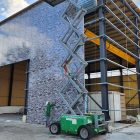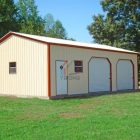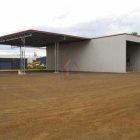Design of steel structure beams in metal warehouse
Steel structure beams are commonly used in the construction of metal warehouses due to their high strength, durability, and the ability to withstand heavy loads. In this article, we will discuss the design considerations and steps involved in designing steel beams for metal warehouse.
The first step in designing steel structure beams for the metal warehouse is to determine the loads that the beams will be subjected to. These loads include dead loads, such as the weight of the beams and the roof, as well as live loads, such as the weight of the stored materials and any equipment that will be used in the warehouse. It is important to accurately calculate these loads to ensure that the beams can safely support the weight.
Once the loads have been determined, the next step is to calculate the required size and shape of the steel beams. This is done by considering the span of the beams, the spacing between them, and the maximum allowable deflection. The deflection is the amount that the beam will bend under the load, and it must be within acceptable limits to ensure the structural integrity of the steel beam warehouse.
To calculate the required size of the steel beams, engineers use structural analysis software or manual calculations based on well-established formulas. The calculations take into account the material properties of the steel, such as its yield strength and elastic modulus, as well as the loads and the desired deflection limits. By adjusting the dimensions of the beams, such as their depth and width, engineers can find the optimal size that meets the design requirements.

In addition to the size, the shape of the steel structure beams also plays a significant role in their design. Common shapes for steel beams include I-beams, H-beams, and C-beams. The choice of shape depends on factors such as the loads, span, and available space in the warehouse. I-beams, for example, are often used when the beams need to support heavy loads and have a long span. H-beams, on the other hand, are suitable for shorter spans and can provide additional strength due to their shape.
After determining the size and shape of the steel beams, the next step is to design the connections between the beams and other structural elements, such as columns and roof trusses. These connections must be designed to transfer the loads from the beams to the other elements while maintaining the overall stability of the warehouse. Depending on the design requirements, engineers may use various connection methods, such as welding, bolting, or a combination of both.
It is also important to consider factors such as fire resistance and corrosion protection when designing steel beam for the metal warehouse. Fire resistance can be achieved by applying fireproof coatings to the beams or by using fire-rated materials. Corrosion protection can be achieved by using galvanized steel or by applying protective coatings to the beams, especially in environments where moisture or chemicals may be present.
In conclusion, the design of steel structure beams in metal warehouse involves determining the loads, calculating the required size and shape of the beams, designing the connections, and considering factors such as fire resistance and corrosion protection. By following these steps, engineers can ensure the structural integrity and safety of the warehouse while maximizing its storage capacity.












